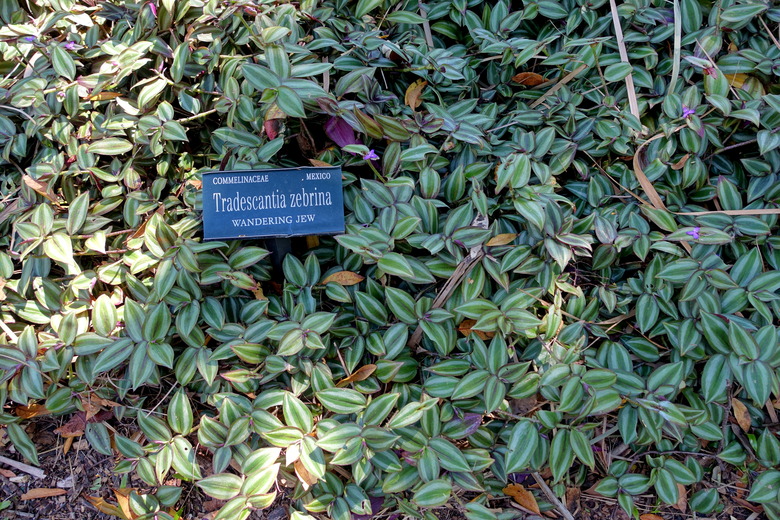How To Care For A Wandering Jew Plant
Every gardener who values hanging baskets has likely incorporated the ubiquitous wandering jew plant. Also known as inch plant, spiderwort and wandering dude, this versatile, trailing plant is easy to grow and tolerates a wide range of conditions. Plus, it looks great.
Wandering jew (Tradescantia zebrina, USDA hardiness zones 8 to 12) is widely grown as a houseplant, in a hanging basket, or as a groundcover in zones warm enough for it to withstand outdoor temperatures during the winter months.
About Wandering Jew/Dude
The Tradescantia genus comprises about 75 species of flowering plants, all perennials. Wandering jew usually has striped or variegated leaves, which can combine deep green, white, deep purple or lavender.
A tender perennial originally from southern Mexico and Guatemala, it has become a popular houseplant, prized for its rapid growth and lush foliage.
Few pests or diseases target this plant, but it might be bothered by infestations of spider mites, aphids, scale, mealybugs or whiteflies. If it is grown in too-wet soil, it can develop root rot.
Wandering Jew as a Groundcover
If you are lucky enough to live in a zone where wandering jew can subsist outdoors in winter, you can grow it as a groundcover. Grown like this, it will reach from 6 to 12 inches high. It creeps along the ground, rooting via its leaf nodes, and a single plant can cover 2 feet or more unless pruned.
- Light requirements: The amount of light this plant receives affects its leaf color. While it can handle full sun, which will result in deeper and more striking coloration, too much sun in warm climates can have the opposite effect, bleaching the leaves. In addition, too little light causes leaves to drop off and the stems to become leggy. The upshot is that it does best in partial sun or light shade when grown outdoors.
- Water and soil: While it requires well-draining soil like most plants, it hates to be waterlogged, so water only when the soil is dry. It prefers a slightly alkaline pH. Space plants from 18 to 24 inches apart to ensure they have enough room to spread.
- Fertilization: This plant needs no fertilization or special treatment. After it flowers or becomes overgrown, prune it back using either clippers or shears. Wandering jew can handle heavy pruning and will reward you with denser and fuller growth. Propagation is through stem cuttings, which quickly become new plants.
Tip
Avoid watering the base of the stems directly, which can result in root rot. Mist the leaves to provide some necessary humidity or add a humidifier to the environment.
Wandering Jew as a Houseplant
Growing wandering jew as an indoor plant is primarily about ensuring enough light, so choose a location with as much direct sunlight or bright indirect light as possible.
Choose high-quality potting soil and a pot with good drainage for your houseplant. As when growing outdoors, allow the soil to become dry before watering, but water deeply when necessary.
Fertilize twice monthly using general houseplant liquid fertilizer. Pinch back the stems if the plant becomes leggy or spindly to encourage new growth. If the wandering jew plant overgrows its pot, break it into several plants and repot.

